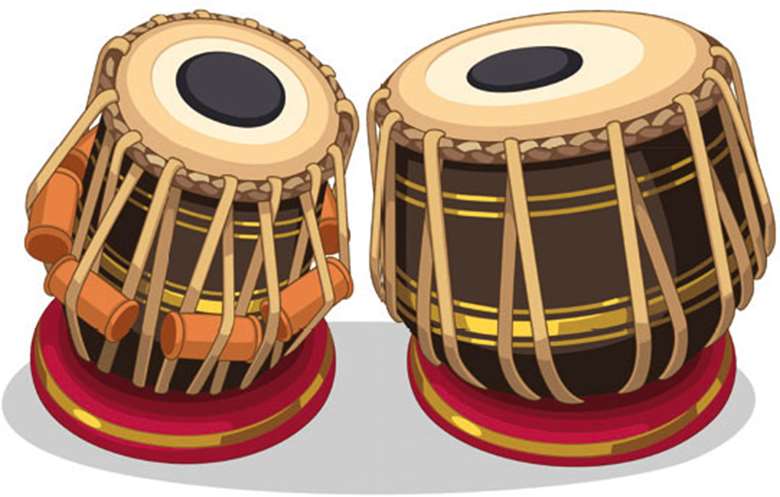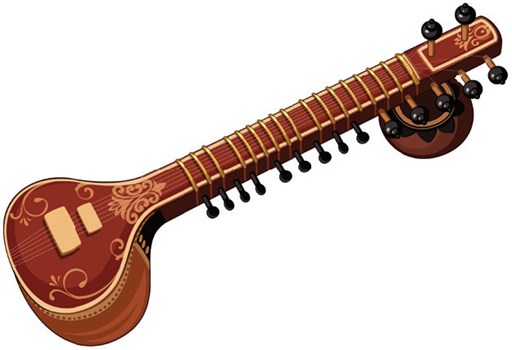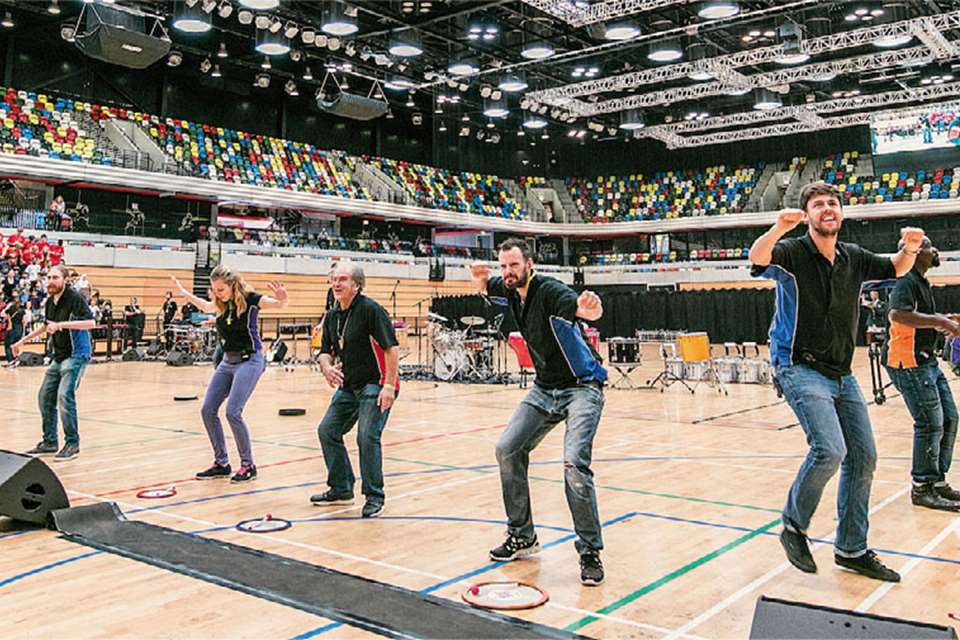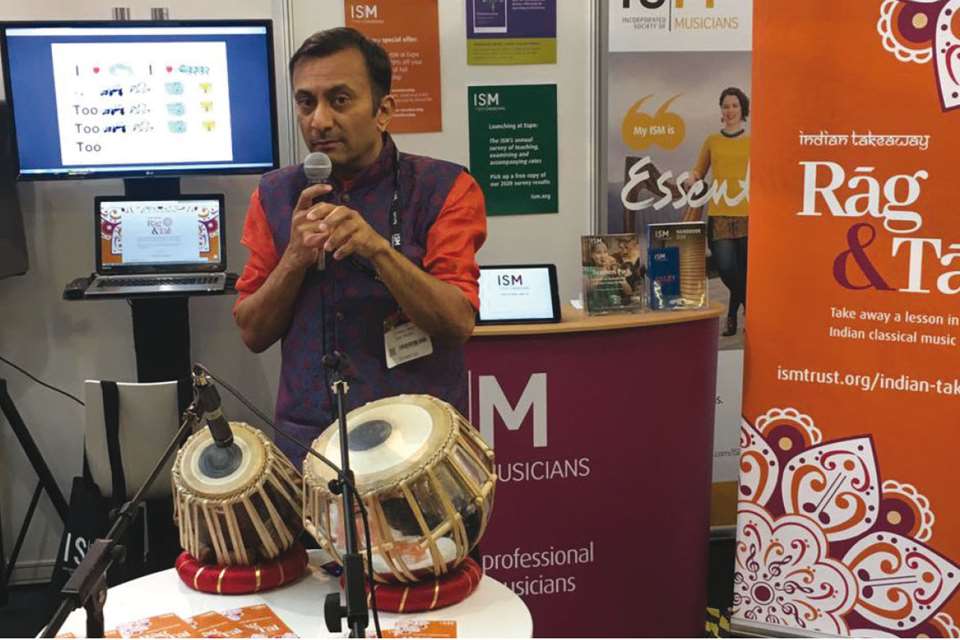Sounds of South Asia: Teaching South Asian musical traditions
Anita Datta
Wednesday, September 1, 2021
We are all familiar with the potential challenges of teaching music from different cultures authentically and sensitively. Anita Datta offers some guidance for sharing South Asian musical traditions with your students.

Pallavi/AdobeStock
The musical traditions of South Asia are a popular and valuable feature in many schools' musical curricula. Anchored in aural traditions, the classical musics of this region are singing-centred and improvisatory, while the popular music of recent decades pushes the boundaries of pop, fusion, and DJ culture globally. The straight-forward systems for vocalising melody and rhythm support the development of students' musical ear, encourage improvisation and self-expression, and are achievable in an authentic and exciting way with no additional classroom resources.
However, the ways in which these musical traditions are represented in syllabuses and in classrooms are often fraught with inaccuracy, misrepresentation, oversimplification, or reductionism. This long-standing issue has caused generations of students to be excluded from musical recognition at school, and also deprives non-South Asian students of the opportunity to experience South Asian sound worlds in a meaningful way.
All of this can be overcome with a little dedicated research and planning. Here are some pointers to help you find a way to engage your students in South Asian musical traditions, offering them the benefits of this dynamic, embodied approach to music and the experience of another approach to making music.
What to do
Your research
- Consider training on inset days, or consulting a specialist to provide a workshop and advise on a scheme of work.
- Read beyond and around what you plan to teach. It's always a good idea to know more about the subject than you include in your lessons. This will enable you to appreciate the broader context within which your topic of choice sits in South Asian musical traditions.
- Recognise that whatever you share with your students is a tiny part of an internally complex and diverse musical tradition that is historically grounded and yet very much alive and flourishing.
- Always consult practitioners with adequate experience in South Asian musical traditions to assist and moderate marking the performances of students who wish to play South Asian instruments for exams. Incorporate the need for this in your departmental budget as a principle for equality and inclusion. Students shouldn't lose out on the grades that they merit or incur additional expenses because of the ethnocentricity of the music syllabuses or teachers' training.
Encourage students to get involved
- Get them to clap the tintal cycle, and improvise with bols, numbers or words within that.
- Sing the scale to saregam. Ask them to sing some well-known tunes to saregam, like Happy Birthday or Twinkle Twinkle. Can they work out their favourite song in saregam?
- GCSE/A Level students working with a raga should sing the notes or common figures of the raga and develop a feel for it in this way.
- Instrumentalists can try to transfer any of the above to their own instrument
- Encourage improvisation!
Talk to your students of South Asian origin
- If you know that you have students of South Asian origin in your class, without assuming their family background or knowledge base, have an open conversation about anything they want to share or discuss in class.
- Understand whether they play or listen to any music from South Asian traditions at home before planning your lessons. Recognise that there are many South Asian musical traditions that are not represented in the syllabus, which thrive and have value to people of South Asian origin. If you can, learn about musical styles your students bring up and try to incorporate them into your scheme of work.
What to avoid
Analysing South Asian musical traditions in Western Classical terms
- This is tricky, because the language of analysis and assessment for music in schools is almost always anchored in Western Classical musical concepts, such as tonality, harmony, staff notation etc. While it can be helpful to explore comparisons with what students are already familiar with, describing South Asian music in these terms is typically inaccurate, or reductive at best.
Relying on ‘world’ or ‘traditional’ music framing
- Remember that people of South Asian heritage make up over 5 per cent of the UK population, and over 25 per cent of the global population. This is far from the musical heritage of a ‘minority’ group.
- Acknowledge and understand the effect of orientalism and exoticisation on current students and non-white people historically. While celebrating diversity is to be encouraged, undue praise and elevation of a musical or cultural phenomenon due to its difference as opposed to its quality is still othering and perpetuates harmful social ideas about race and culture.
Sticking to the syllabus
- The GCSE and A Level syllabuses for music either omit South Asian musical traditions, or include inaccuracies, generalisations or (poorly executed, but necessary) over-simplification.
- Find ways to engage South Asian music traditions in ways that connect to your students' strengths.
- Tech and Pop music: Bollywood Music, ‘Desi’ and Desi Pop, Remix and DJ culture in British Asian communities.
- Western Classical: Parallels between saregam and solfa/Kodály, modal music, ‘Court Music’ contexts in both Western and Indian classical histories.
- Other Diasporic Musics: Improvisation, influences from folk musics, music and identity (if you're confident you can lead this sensitively).
- Go beyond the South Asian artists and musicians who are well known to Western musical audiences. Find out which artists South Asian audiences most admire. Compare different performers' recitations of the same raga, or the playing of different sitarists, for example.

© Pallavi/AdobeStock
Glossary
Bol – A ‘bol’ is an element of the system of speaking rhythm in Hindustani/Carnatic classical traditions, which also features in contemporary and popular music from the region. Bols are used to teach, learn and transmit rhythmic compositions in South Asian musical traditions.
Saregam – The South Asian sol-fa system: Sa Re Ga Ma Pa Dha Ni (Sa)
Raga – A musical framework comprising a collection of notes arranged in a linear pattern and defined by characteristic motifs, phrases, and also extra-musical associations including but not limited to mood, time of day, season etc. May refer to a raga-as-framework, or a performance improvised within any one such framework (Note: Sometimes described as modes or scales. This is reductive and misrepresents the nature of ragas, so should be avoided.)
Recommended resources
-
Indian Takeaway: Rāg and Tāl basics – recordings of workshops delivered by Yogesh Dattani for the ISM Trust. www.ismtrust.org/resources/indian-takeaway
-
BBC Bitesize: Music of India – short series and suggested scheme of work based on Raag Desh. www.bbc.co.uk/bitesize/guides/zsydwmn/revision/1
-
Ustad Dharambir Singh: YouTube – the YouTube channel of UK-based Sitar maestro includes several series of step-by-step tutorials on authentic approaches to improvisation in the Hindustani Classical style. www.youtube.com/user/Sitarsingh/videos




